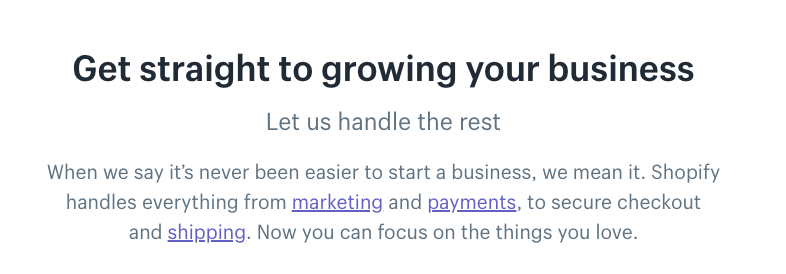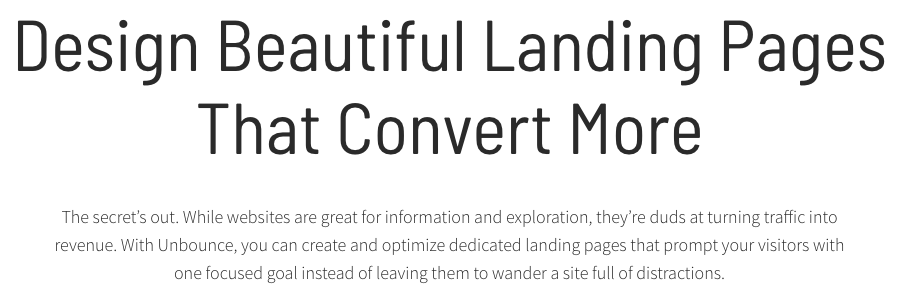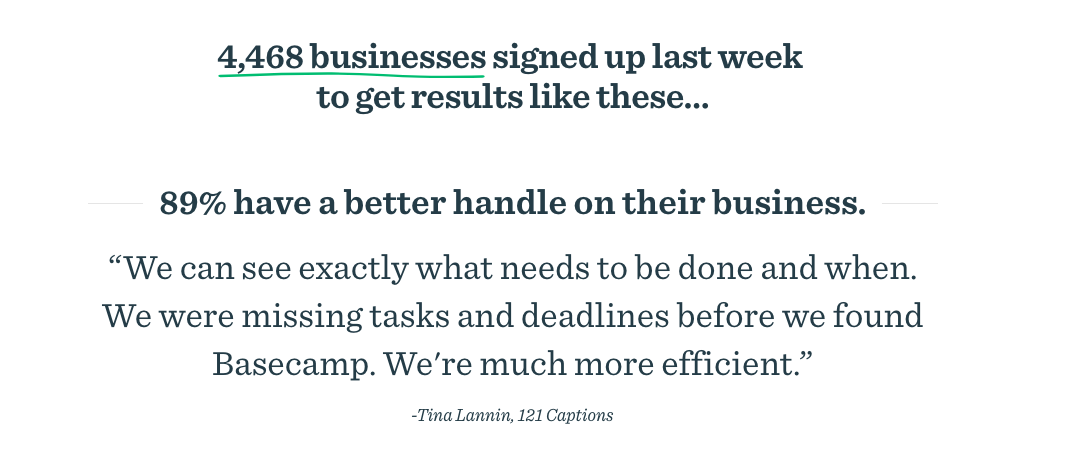

A value proposition is a statement that answers the ‘why’ someone should do business with you. It should convince a potential customer why your service or product will be of more value to them than similar offerings from your competition. You know why your company is great, but do your potential customers know what sets your brand apart?
A good value proposition can give you an advantage over your competitors and is often what your prospects use to evaluate you. And for many consumers, your value proposition is the first thing they encounter when exploring your brand, through some digital marketing channel. So, having a clear, concise value proposition is more important than ever. (Consider this: You’ve got less than a minute to capture a site visitor’s attention.)
When creating a value proposition, it’s important to identify all the benefits your product or services offer. Describing what makes these benefits valuable in a quickly digestible way for the reader will help your value proposition make an impression. It’s also critical to identify your customer’s main problem your value proposition helps solve. By connecting this value to your buyer’s challenges your value proposition will become more clear. This is what helps differentiate your brand as the best provider of this product or service.
That seems like a lot to fit into a concise statement, doesn’t it? So it should come as no surprise that creating a good value proposition is a struggle for most marketers. Marketingexperiments.com surveyed marketers and found that many struggle with value propositions because either:
Shopify’s value proposition lets you know it can handle all of your ecommerce needs no matter where you sell from.
 Why it works: Whether you’re an established business or sell crocheted dog sweaters from a pop-up shop during the holidays, Shopify uses simple language to communicate its benefits to a variety of sellers.
Why it works: Whether you’re an established business or sell crocheted dog sweaters from a pop-up shop during the holidays, Shopify uses simple language to communicate its benefits to a variety of sellers.
A little further down the page, Shopify reinforces its key benefits by further explaining what it can do.

When it comes to marketing software offerings, it can be difficult to concisely communicate your value proposition when the majority of your competitors offer the same services.

Why it works: TrackMaven concisely speaks to a marketer’s pain point — proving ROI. It clearly communicates that it understands you’re probably overwhelmed trying to prove ROI, and its solution makes it easy for you to do so.
As soon as you visit video and web conferencing service Zoom’s site, you’re greeted by their value proposition and the reason why you should choose its services — it’s rated the No. 1 video conferencing and web conferencing service by Gartner.

Why it works: Social proof. Scroll down a little bit more, and the company answers the ‘why’ you should choose them by providing five benefits unique to the company. Not only that, it speaks to some pain points businesses that need video conferencing may experience: inconsistent experiences, difficult platforms and hidden pricing.

As soon as you land on WordPress, it's immediately clear that this service will help you build a website. Even as you scroll, you're reminded that you are here because you're interested in building one.
 Why it works: WordPress works as an all-in-one platform for people looking to build a website, sell their product or even start a blog, and as you scroll down the page, all these elements are highlighted accordingly. For someone new to this process, the value prop also points out how easy it is with WordPress. When comparing to competitors, this could be a major selling point.
Why it works: WordPress works as an all-in-one platform for people looking to build a website, sell their product or even start a blog, and as you scroll down the page, all these elements are highlighted accordingly. For someone new to this process, the value prop also points out how easy it is with WordPress. When comparing to competitors, this could be a major selling point.
 Unbounce
UnbounceUnbounce is another example of a value prop that explicitly hits on a pain point: driving more conversions. This website is clearly geared toward marketers looking to improve conversions with A/B testing in a way that doesn't require them to wait on developers.
 Why this works: Who wouldn't want the secret to converting more leads? The value prop uses powerful language further down the page that all but guarantees the money will start flowing shortly after signing up.
Why this works: Who wouldn't want the secret to converting more leads? The value prop uses powerful language further down the page that all but guarantees the money will start flowing shortly after signing up.
 Groove
GrooveGroove is a customer support tool, and then some. Groove's value is that it can help your business grow without leaving your customers behind.
 Why this works: This software is geared toward people who have tried other help-desk clients and found them too expensive, too complicated or both. There's even a CTA at the top of the homepage calling Groove the No. 1 alternative to Zendesk.
Why this works: This software is geared toward people who have tried other help-desk clients and found them too expensive, too complicated or both. There's even a CTA at the top of the homepage calling Groove the No. 1 alternative to Zendesk.
Good value propositions can be as elusive as a unicorn, but that doesn’t mean they can’t be found (or in this case, created.) But as you read earlier, most marketers struggle with putting a good value proposition together. Here are a few common mistakes that can get in the way of creating good value propositions.
Of course you love your product, of course you think what you’ve got is the best ever, but should you say that? No. If your value proposition declares that you have “the most easy-to-use marketing automation platform” on the market, you’ve got to back that up.
Take Zoom video conferencing, for example. Its claim that it is the “#1 video conferencing and web conferencing service” is backed up by a Gartner analysis. But you don’t have to have a study by a leading IT research and advisory firm to back up your claims. Case studies and customer testimonials can also give you the proof you need.
These customer testimonials from Basecamp help drive home its selling point that it makes businesses more efficient.
 Not Being Clear
Not Being ClearWe’ve all been there. Having visited a site or read about a product and being left with the question: “But why should I care?” It’s easy to see why people should buy your product or services when they’re your product or services, but for everyone else, you need to clearly communicate exactly what sets you apart.
If your site or value proposition doesn’t clearly and quickly communicate your selling points and why someone should become a customer, your potential customers are going to find a company that does, and you’ll see that in your site’s bounce rates.
Believe it or not, A/B testing can also be helpful when crafting a compelling value proposition. See what kinds of terms perform best by A/B testing conversions on your site. You can also find which language resonates with your potential customers by using PPC ads, according to Marketingexperiments.com.
In its example, the company uses PPC ads for an ISO test company. Each ad contains a different set of keywords. Then, based on the clickthrough rates of each ad, you can determine which value proposition resonates best with your potential customers.
A good value proposition can be the difference between your next customer or another bounce statistic. Creating a compelling value proposition doesn’t have to be overwhelming. Clearly communicating what makes you unique (without being too clever) with proof and testing can help you stand apart from your competition.
.jpg)